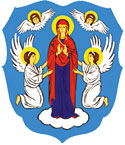 In Europe, emblems began to be given in feudal times; in Belarus, cities received their first emblems in the 16th-17th century. They were usually approved simultaneously with the receiving of the Magdeburg Right (envisaging self-government).
In Europe, emblems began to be given in feudal times; in Belarus, cities received their first emblems in the 16th-17th century. They were usually approved simultaneously with the receiving of the Magdeburg Right (envisaging self-government).
Minsk received the privilege of self-government under the Magdeburg Right in 1499, as a gift from the Grand Duke of Lithuania, Alexander Jagiellonczyk. By that time, the city was playing a significant role in the Grand Duchy of Lithuania, as an administrative and economic centre. On January 12th, 1591, Minsk received a privilege from the King of Poland and the Grand Duke of Lithuania, Sigismund III, confirming the Magdeburg Right. Moreover, Minsk was awarded with its emblem.
Minsk’s medieval emblem featured one of the major saints of the Christian Church, the Virgin Mary, during her ascension: a common theme for seals in the 16-17th century (from 1591). On July 12th, 2000, a law was adopted On the Status of the Capital of the Republic of Belarus — the City of Minsk, envisaging the city having its own flag, emblem and hymn. Accordingly, Minsk City Council held a contest to select the best suggestions. As a result, it became evident that the previously used emblem remained the best.
Staff from the Belarusian Archive, Marina Yelinskaya, Grigory Zholnerkevich and Sergey Rassadin, helped reconstruct Minsk’s historical emblem. Using archive sources, they found a geographical basis for Minsk’s emblem, which was adopted to meet the modern rules of heraldry. On March 27th, 2001, the emblem was approved by Minsk’s City Council of Deputies and, on April 13th of the same year, was enlisted on Belarus’ Emblem Matriculate.
The emblem of today’s Belarusian capital is a Baroque style shield, with the Virgin Mary’s ascension depicted against a blue background. It is an historical-heraldic monument.











